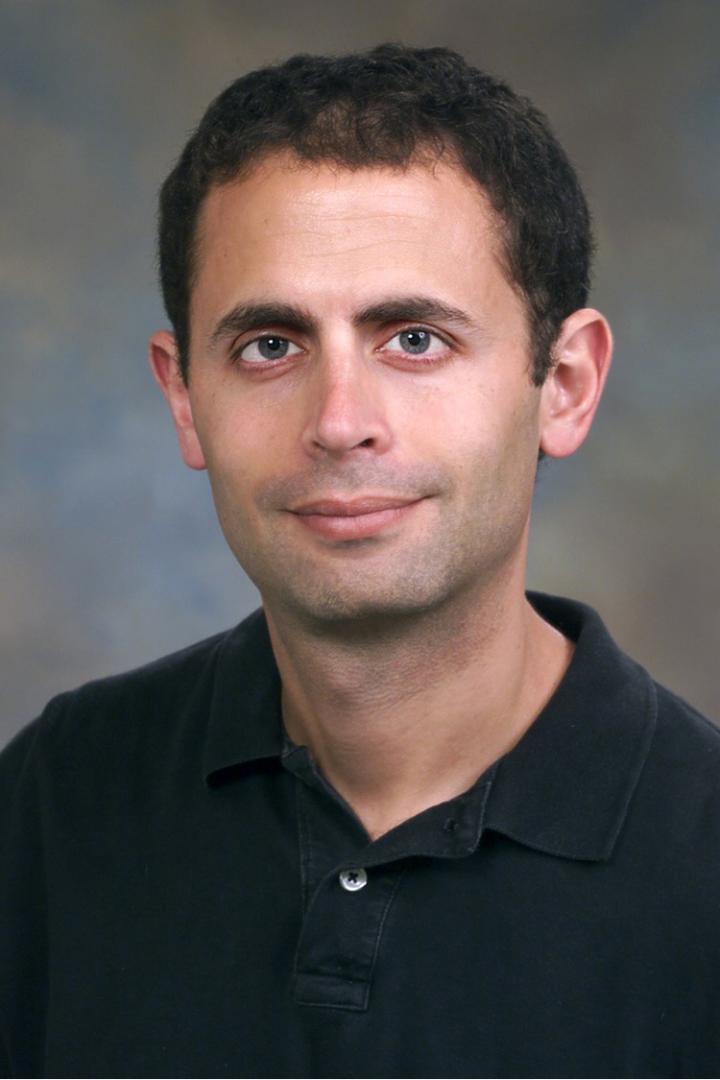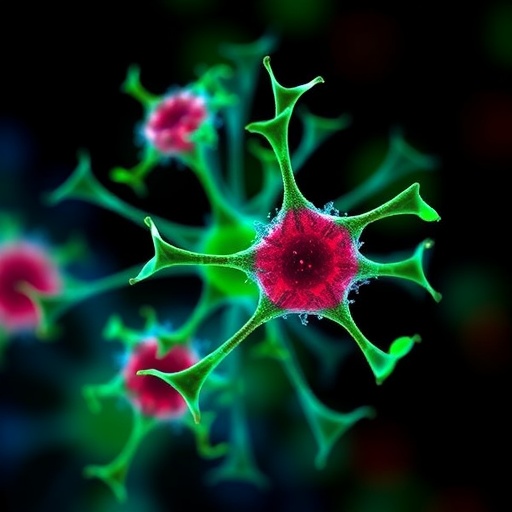
Credit: Biomedical Graphics
LA JOLLA, CA – November 1, 2016 – Scientists at The Scripps Research Institute (TSRI) have developed a broadly useful method to unmask new functional features of human proteins.
Proteins carry out thousands of essential functions in cells, but their activity typically is controlled–raised or lowered, even switched on or off–by the attachment of other functional groups called modifications. When these modifications are chemically reactive, they often serve as cofactors for enzymes. Knowing how these modifications impart protein function can be essential to understanding important biological processes and diseases.
In a study published online on October 31, 2016 by Nature Chemistry, TSRI scientists demonstrated new chemical probes that can be used to discover and characterize previously unknown modifications of proteins.
"In our first try using these probes, we found a reactive protein modification that has never been reported before in biology–that's really exciting and suggests that there are many other reactive modifications, likely to be cofactors, awaiting discovery with these new tools," said Megan L. Matthews, first author of the study and a research associate in the laboratory of Benjamin F. Cravatt, professor and chair of the Department of Chemical Physiology at TSRI.
Powerful Technique
The new technique is broadly based on a research method known as "activity-based protein-profiling" (ABPP) that the Cravatt lab pioneered. It involves small-molecule probes that report on the activity states of entire enzyme classes. By capturing catalytic residues that have enhanced reactivity, the probes can also monitor whether an enzyme is in its active or inactive state. "It's a powerful technique–ABPP probes have been used to discover new enzymes, new enzyme inhibitors and new candidate drug therapies," said Matthews.
ABPP probes have been used to screen proteins for enzymatic activity by forming covalent bonds with certain reactive groups called "nucleophiles," which are naturally found on the side chains of amino acids, the building blocks of proteins.
In the new study, Matthews and colleagues created similar small-molecule probes that instead screen for protein "electrophiles"–which have the opposing reactivity.
Strongly electrophilic sites are typically not part of a protein's amino-acid building blocks, but can be installed into proteins by other enzymes to create modified sites that confer function. The new electrophile-finding probes thus can be used to monitor and discover reactive modifications and enzyme cofactors.
"There are many functional electrophiles found throughout Nature," said Matthews, "but one reason they haven't been studied until now with probes like ours is because a protein's sequence doesn't generally predict where an electrophile will be found or if one might exist."
Taking Advantage of Uncertainty
Matthews and her colleagues turned this uncertainty to their advantage, using the probes in living cells to mark and isolate protein electrophiles in an unbiased, catch-all manner.
With the help of advanced techniques for determining the chemical structure of any protein and its modifications, the researchers were also able to study some of these electrophiles in detail and discover new aspects of how enzyme activity is controlled in the cell.
In one case, they used a probe to monitor an important enzyme and drug target, AMD1, which uses a known electrophilic cofactor that effectively switches on its activity. The scientists discovered that the presence of this cofactor is, in turn, regulated by surrounding levels of yet another molecule, the amino acid methionine.
In another case, they discovered a previously unknown type of protein modification, an attachment by a cluster of atoms called a glyoxylyl group. "This had never been described before in any species, but it occurs at a highly conserved site on the protein so it's probably functional–I suspect that it could represent a new class of cofactors," Matthews said.
In all, the study uncovered dozens of proteins with apparent electrophiles that have never been characterized. Among them are unknown modifications to the Alzheimer's-related amyloid precursor protein, and to KEAP1, which plays a role in cancers and has been eyed as a potential drug target. Matthews is now busy following up on those and other leads.
Key contributions to the research came from Lin He, who during the study was a research associate in the laboratory of TSRI Professor John R. Yates III. He and Matthews worked together to develop algorithms to predict the structure of the glyoxylyl-modified protein from the probe-based data. Erika J. Olson, a graduate student in the laboratory of Philip E. Dawson, professor in TSRI's Department of Chemistry, also provided crucial assistance in validating the newly discovered structure.
###
Other co-authors of the paper, "Chemoproteomic profiling and discovery of protein electrophiles in human cells," were Benjamin D. Horning and Bruno E. Correia, all of TSRI at the time of the study.
Funding for the research was provided by the National Institutes of Health (CA132630, P41 GM103533, U54 GM114833), the National Science Foundation (DGE-1346837) and a Helen Hay Whitney Foundation Postdoctoral Fellowship sponsored by Merck & Co.
About The Scripps Research Institute
The Scripps Research Institute (TSRI) is one of the world's largest independent, not-for-profit organizations focusing on research in the biomedical sciences. TSRI is internationally recognized for its contributions to science and health, including its role in laying the foundation for new treatments for cancer, rheumatoid arthritis, hemophilia, and other diseases. An institution that evolved from the Scripps Metabolic Clinic founded by philanthropist Ellen Browning Scripps in 1924, the institute now employs more than 2,500 people on its campuses in La Jolla, CA, and Jupiter, FL, where its renowned scientists–including two Nobel laureates and 20 members of the National Academy of Science, Engineering or Medicine–work toward their next discoveries. The institute's graduate program, which awards PhD degrees in biology and chemistry, ranks among the top ten of its kind in the nation. For more information, see http://www.scripps.edu.
Media Contact
Madeline McCurry-Schmidt
[email protected]
858-784-9254
@scrippsresearch
http://www.scripps.edu






